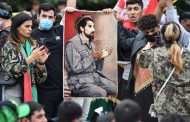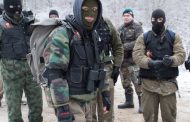Like natural disasters, terrorist attacks have the potential to shape human history — if they happen at the right time and at the right place. But even then, both are more likely to leave their mark by shaping larger trends than by causing radical shifts by themselves.
Unlike natural disasters, the humans who orchestrate terrorist attacks have the ability to choose the time and place, and oftentimes to exploit political or societal fault lines that can accelerate trends.
Technology, political and economic developments, and ideology and theory come together to create terrorist movements. And the terrorist attack cycle ends with the “escape and exploitation phase,” when terrorist groups cash in on their work and collect their political dividends. But what are those dividends, and why do some attacks yield higher returns than others?
Tactical and Strategic Effectiveness
On March 11, 2004, 10 cellphone-detonated dynamite charges concealed in rucksacks packed with nails detonated onboard four different trains during morning rush hour in Madrid. The explosions killed 191 people and injured nearly 2,000 more. Tactically, the bombing was well executed. The devices functioned as intended, were timed to instill maximum casualties and brought Madrid’s public rail system to a halt.
Strategically, it was a textbook operation — one of the best examples of an attack achieving its intended objective. In the weeks before the blasts, al Qaeda had called for violence against Spain to unseat the ruling People’s Party, which had supported the U.S.-led war in Iraq by sending 1,400 Spanish soldiers there.
An election on March 14 was to be the first major vote in an Iraq war coalition country since the 2003 invasion, and it was meant to test the strength of the coalition’s decision to sign on to the controversial war. In the year ahead of the attack, the People’s Party had enjoyed a comfortable and steady lead over the second-place Spanish Socialist Workers’ Party and had maintained that lead right up to March 11.
After the Madrid bombings, the People’s Party dropped 5 percentage points in the polls, and the Socialist party rose by the same amount — essentially swapping places. The Socialists went on to win the election, and within two months withdrew Spain’s troops from Iraq. The March 11 attacks achieved their originators’ intent in a rare, clean-cut victory for terrorism.
Spain’s withdrawal did not significantly alter the war effort (their contribution made up about 1 percent of the total troops in Iraq at the time), but it did highlight the rift within NATO over participation in the war.
Militants using asymmetric warfare against a much more powerful state or alliance of states usually amplify their power by finding and exploiting fault lines. In the case of Madrid, the attack exploited Spanish popular opinion about the war and the tension within NATO.
Defined as “politically motivated violence against noncombatants,” terrorism for the sake of causing fear is typically not the end goal of these assaults. Attacks must be assessed using measures beyond just the level of skill displayed, the success of their execution and the amount of damage caused and deaths inflicted. The analysis must also take into consideration how the attack brought the group closer to its stated goals.
“Politically motivated” is the qualifier to the violence in our definition. Another attack in Spain 13 years later provides a counterexample to the 2004 Madrid attack. On Aug. 15, 2017, a terrorist cell in Catalonia had assembled nearly 100 kilograms (220 pounds) of explosive material and were putting the finishing touches on a plan to deploy it against several Barcelona tourist sites. The result could have been at least as deadly as the 2004 attacks in Madrid.
However, the explosives detonated prematurely, destroying only the house the group was hiding out in and two of the bombmakers. So, on Aug. 17, the remnants of the group carried out a series of vehicular attacks in Catalonia that managed to kill 16 people and injure over 100 more.
Tactically, the plot was not executed as well as the 2004 attack, but strategically, it was unclear what the group was trying to achieve. Other than lofty illusions of returning “al-Andalus” — Spain — to Muslim rule, it is not clear that the group had a medium-term objective.
The 2004 attackers also alluded to al-Andalus, but it was going to take much more than one terrorist attack to dismantle the Spanish state and establish a caliphate there. So the attackers settled for a more obtainable goal: driving Spain out of Iraq.
In 2017, the goal of returning Spain to Muslim rule is equally far-fetched, so even if the group had been tactically successful, it is unlikely their operation would have achieved strategic success. The political motivation behind the latest attack appears to have been crude and not fully fleshed out, highlighting its tactical and strategic inferiority to the 2004 attack.
Exploiting Fault Lines
Other attacks have changed the course of history in unexpected ways. John Brown intended to spark a slave rebellion with his 1859 attack on Harper’s Ferry in what is now West Virginia and end the institution of slavery in the United States once and for all. Tactically, it was a complete failure. No slaves rose up in response. Brown and all of his raiders were either killed by responding Marines or executed later for treason.
It wasn’t even successful in terms of slave rebellions: Nat Turner had managed to recruit over 80 slaves to his failed rebellion in 1831. But what Brown lacked in execution, he made up for in timing. The events at Harper’s Ferry unsettled Southern slaveholders, leading them to organize militias and view Northern states as a territorial threat.
The failed raid forced the issue of slavery into the 1860 elections, and 18 months later the opening shots of the U.S. Civil War were fired at Fort Sumter in South Carolina. Certainly, Brown’s raid alone did not cause the Civil War — the conflict had already been brewing for a generation — and it did not end slavery through rebellion, as he had envisioned it.
However, it did inflame a tender fault line between the abolitionist North and the pro-slavery South, provoking violence that eventually led to a military and political solution ending the age of slavery in the United States.
As for the second half of the terrorism definition — “violence against noncombatants” — it does not necessarily have to involve killing. In the Iraq War, the anti-U.S. insurgency there had been building for two years by early 2006, but an operation to take down a Shiite holy site in Samarra helped expand that insurgency into a full-scale sectarian conflict.
On Feb. 22, 2006, a team of militants dressed in Iraqi military uniforms detained the guards at al-Askariyah mosque, detonated explosive charges around the pillars of the building’s iconic golden dome and reduced the holy site to a pile of rubble.
No people were killed in the attack, but the destruction of one of the holiest sites to Shiites unleashed a week of murders and violence that more than made up for the lack of deaths in the original attack. The provocation and violent response against Sunnis aggravated a well-known sectarian fault line in Iraq that had been flaring up for most of the thousand years that al-Askariyah’s golden dome had towered over Samarra.
Like the 2004 Madrid attack, this one also hit close to the mark of its stated objective: a “religious civil war in Iraq,” as sought by al Qaeda in Iraq leader Abu Musab al-Zarqawi. Pedantic arguments over the definition of a civil war may have ultimately denied al-Zarqawi his goal, but the bombing and the violence it provoked threatened to topple Iraq’s fledgling government. U.S. forces tracked down al-Zarqawi and killed him a few months later.
The United States responded to the increase in violence with a troop surge in 2007 that, with the assistance of Sunni Arab tribes in the Anbar Awakening, turned the tide against radical violence.
Shiite leader Muqtada al-Sadr also made a name for himself in the 2006 sectarian violence, and he continues to be a political heavyweight in Baghdad. However, al-Zarqawi’s objective gained new life in 2014 with the rise of the Islamic State. The al-Askariyah attack reminded everyone of the power of sectarian tensions in Iraq, and their impact continues to be felt today.
Motivations for Preventing Terrorism
Analysis of the tactical and strategic implications of terrorist attacks points to two motivations for pursuing counterterrorism. While counterterrorism helps prevent attacks that take human lives and destroy property, it also seeks to keep violent forces from interfering in domestic political processes.
Political decisions fueled by the collective fear of terrorist attacks are generally not prudent ones. Political opinions on the war aside, handing al Qaeda what they asked for after Spain’s 2004 attacks proved to aspiring jihadists that terrorism was an effective tool.
The United States and its allies sent a similar message to Hezbollah in 1983 when they temporarily withdrew from Lebanon after the Marine barracks bombing in Beirut orchestrated by Imad Mughniyeh. Eighteen years and a series of escalating attacks later, al Qaeda attempted to repeat Hezbollah’s success with the Sept. 11, 2001, attacks.
While those attacks were tactically successful from al Qaeda’s point of view, they did not fulfill the strategic objective of driving the United States out of the Middle East and toppling U.S.-allied Arab governments.
The 9/11 attacks certainly upended U.S. foreign policy though. Terrorist attacks are wild cards that threaten to send already unpredictable political processes into chaos. Safeguarding against political chaos is just as much the objective of counterterrorism as protecting human lives.
Finally, consider the strategic implications of the decisions by Archduke Franz Ferdinand’s executive protection team on June 28, 1914. His protectors failed to pick up on Gavrilo Princip’s ongoing surveillance of Ferdinand and his entourage two days ahead of that fateful day, and several of the archduke’s guards had been injured by a bomb thrown by one of Princip’s fellow conspirators earlier that morning.
Those tactical threats along with the greater strategic threat of radical Serbian opposition to the Habsburgs’ presence in Bosnia spelled out a clear and present danger to the archduke. Indeed, after the bomb blast, the archduke’s security advisers decided to take a different route out of Sarajevo, but the archduke’s driver didn’t get the message and ended up getting stuck in a side street.
Princip was able to shoot and kill the archduke and his wife at virtually point-blank range. Not only did the mishandling of the threat cost the Habsburg monarchy two of its members, it started a chain reaction that led to the start of World War I a month later.
Again, the assassination was only one event among thousands that ultimately caused the war. However, had his security team better studied the threats and understood the risks, they probably could have prevented a terrorist attack that led to not only the death of their principal, but also to the dismantling of the world order as they knew it.








































admin in: How the Muslim Brotherhood betrayed Saudi Arabia?
Great article with insight ...
https://www.viagrapascherfr.com/achat-sildenafil-pfizer-tarif/ in: Cross-region cooperation between anti-terrorism agencies needed
Hello there, just became aware of your blog through Google, and found ...